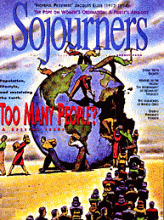When Tom Harpur says the medical establishment is sick, he is neither trite nor merely ironic. Harpur, a force to be reckoned with here in the Great White North, is worth hearing on both sides of the border. He is Canada’s most popular religious columnist and a television commentator; his books are often Canadian best sellers. This former Rhodes Scholar was previously an Anglican priest and New Testament seminary professor.
He says the medical establishment is ill, not just economically and bureaucratically, but because of over-reliance on a medical model that sees the body as merely a machine. The church is also sick unto death, as reflected in dwindling numbers and its overlooking of the mandate to heal.
Harpur cites the January 28, 1993 issue of the New England Journal of Medicine report that "a surprising 34 percent of Americans, or approximately 61 million people, used...unconventional therapies or forms of non-medical healing in 1990." Many of those people were well-educated and most did not tell their doctors that they resorted to acupuncture, chiropractors, homeopathy, massage, self-help groups, relaxation response, meditation, biofeedback, prayer, or laying-on of hands.
Yet Harpur told me: "Doctors are moving. They’ve been dealing first of all with body-as-machine and then psychosomatic body-and-mind (usually in a disapproving way, the negative effect of the mind on the body). Now they are realizing the positive effect of the mind as well....Then we’ll have a whole person again that we’re dealing with, rather than this truncated one."
Read the Full Article
